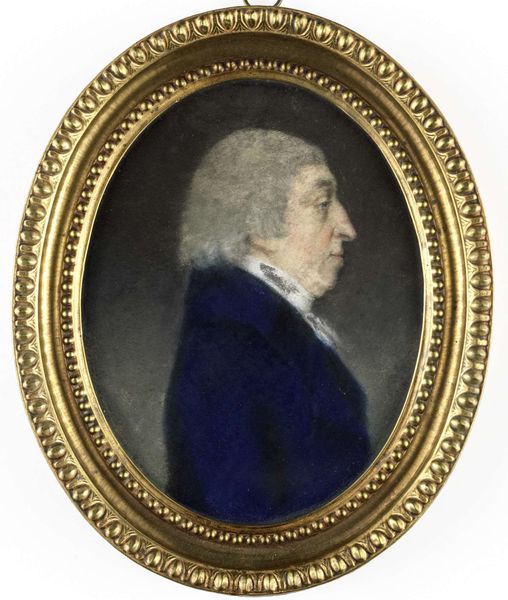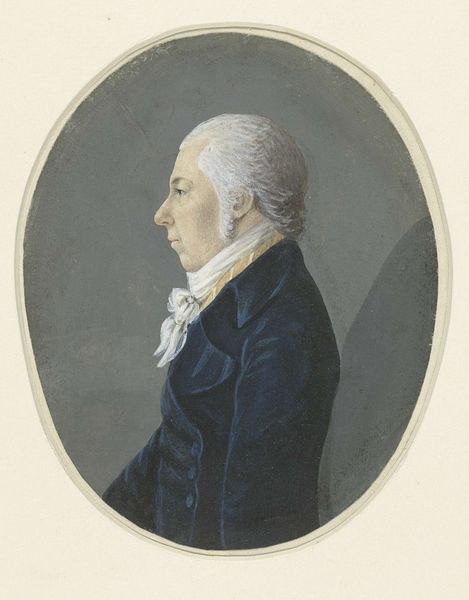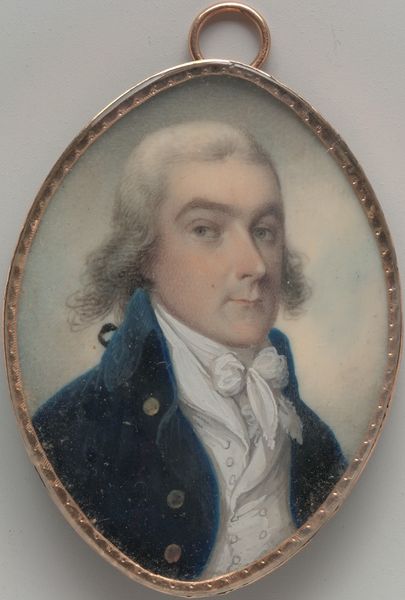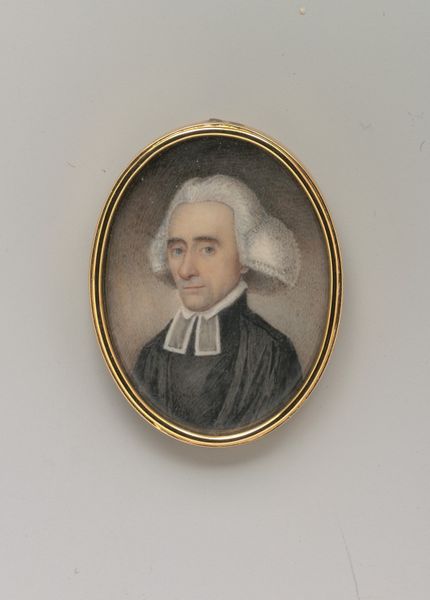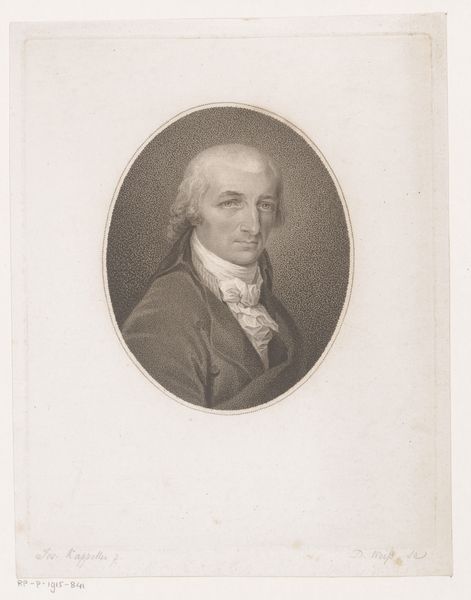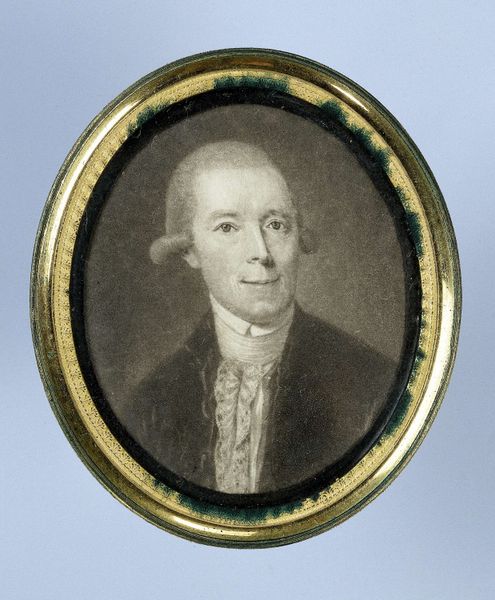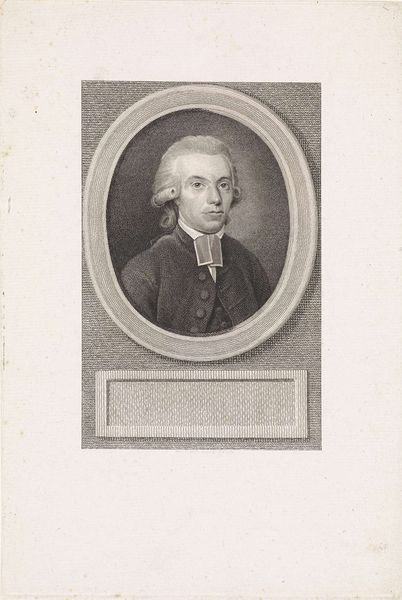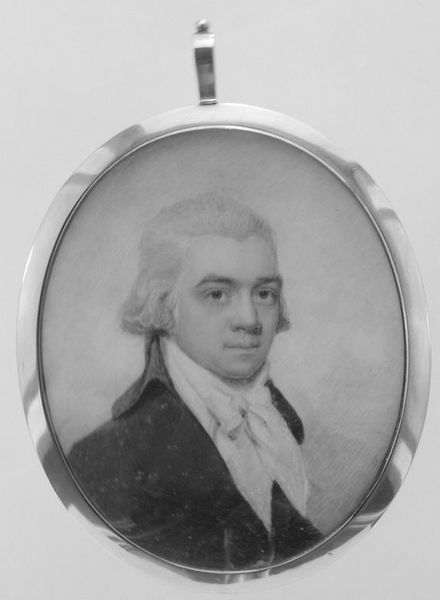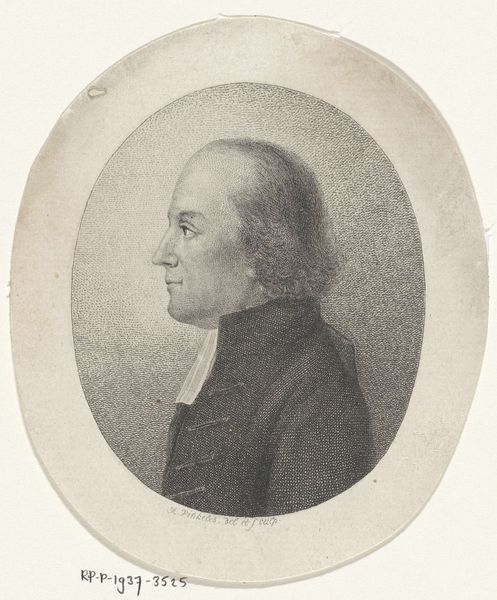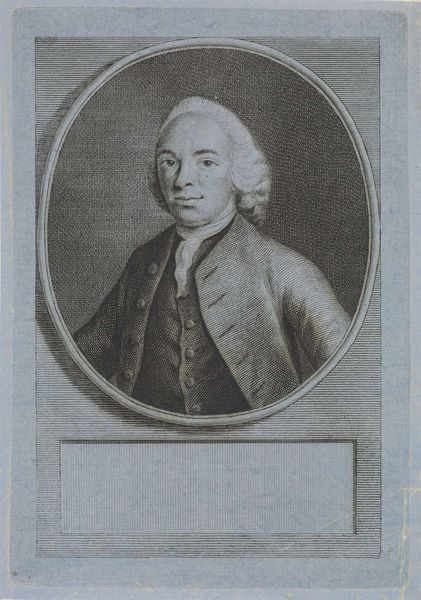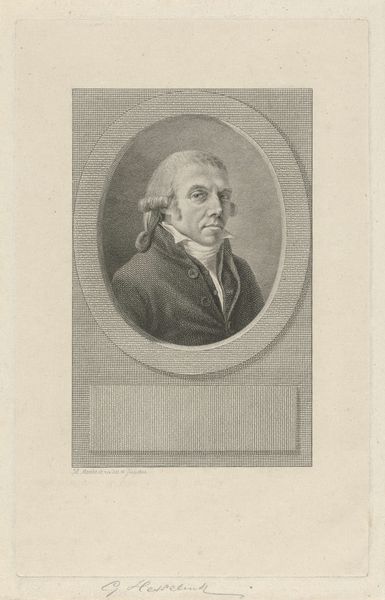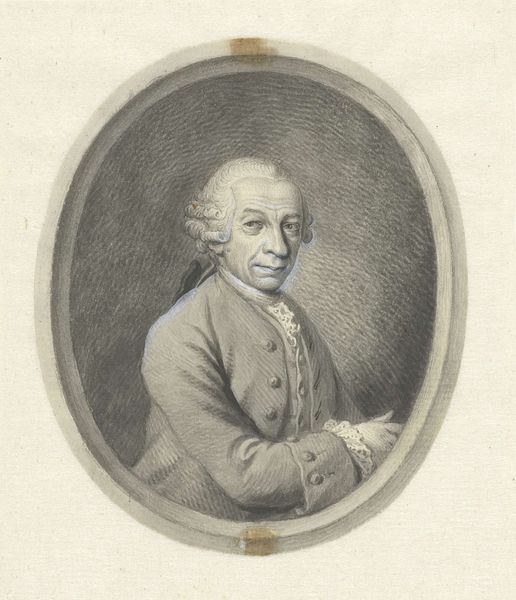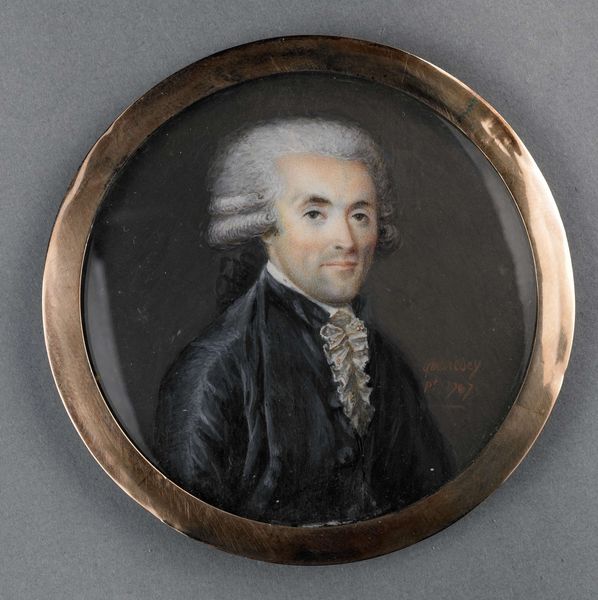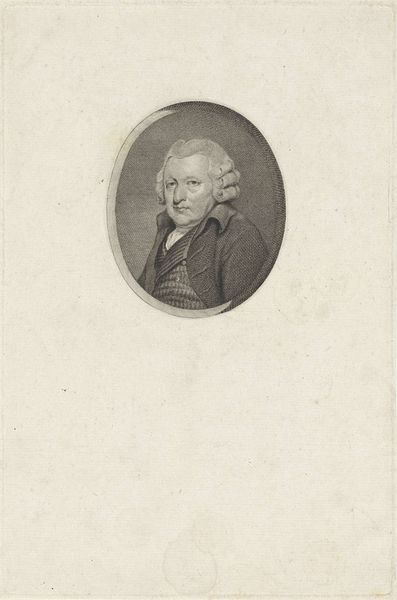
Arend Willem Baron van Reede en zijn zoon Willem Frederik Baron van Reede 1800 - 1830
0:00
0:00
coloured-pencil
#
portrait
#
coloured-pencil
#
coloured pencil
#
romanticism
#
watercolour illustration
#
miniature
Dimensions: height 6.6 cm, width 5.3 cm, height 7.5 cm, width 5.5 cm, depth 0.6 cm
Copyright: Rijks Museum: Open Domain
This is a small, oval portrait of Arend Willem Baron van Reede, and it's quite fascinating when we consider the social context that made such an object possible. Likely dating from the late 18th century in the Netherlands, this miniature would have been an intimate object, perhaps worn as a locket or kept close. Its size suggests a private, personal function, a stark contrast to the large, public portraits of monarchs and the aristocracy that were common at the time. This points to a shift in the way status was displayed; instead of grand displays of wealth and power, there's a move towards more subtle, personal symbols. The baron's attire—the powdered wig, the simple jacket—speaks to a certain level of formality, but it's also restrained. The question then becomes, what does this restraint tell us about the values of the time, and how does it reflect the changing social landscape of the Dutch Republic? To understand this better, we might look into the history of portrait miniatures, the social status of the van Reede family, and the changing role of the aristocracy in Dutch society. Only then can we truly appreciate the complex social and institutional forces at play.
Comments
No comments
Be the first to comment and join the conversation on the ultimate creative platform.
